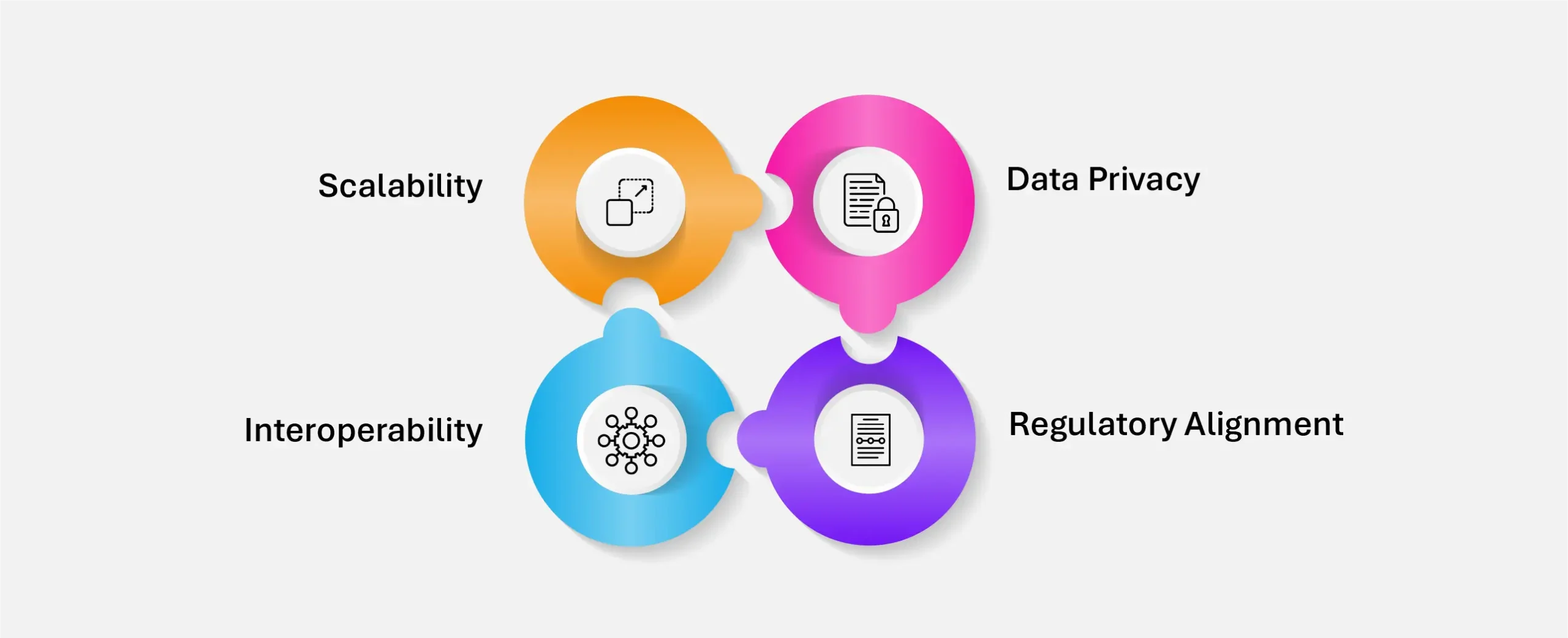What is Blockchain?
At its core, blockchain is a decentralized, immutable ledger that records transactions across a distributed network of computers. But in 2025, blockchain is far more than a cryptocurrency infrastructure—it’s emerging as a foundational layer for verifiable data integrity, digital trust, and decentralized governance across sectors like finance, healthcare, supply chain, identity, and even AI.
Blockchain’s power lies in its ability to create tamper-evident, auditable, and transparent records without requiring a central authority. Each block contains a cryptographic hash of the previous block, ensuring that the chain is resistant to alteration. Once information is added to the blockchain, it cannot be retroactively modified without consensus, making it ideal for audit trails, compliance verification, and trustworthy data sharing.
Blockchain as the Backbone of Trusted AI, Cross-Border Compliance, and Sovereign Governance
In today’s AI-powered, cloud-distributed world, trust in data isn’t optional—it’s existential. As enterprises build models, automate decisions, and move sensitive workloads across borders, the need for tamper-proof visibility into how data is sourced, processed, and accessed has never been greater. Blockchain delivers this trust infrastructure at scale.
Rather than relying on centralized authorities, blockchain offers decentralized consensus, making it ideal for high-stakes use cases like AI training data lineage, explainability, and audit-ready compliance. In regulated industries, it serves as an immutable ledger to prove that consent was given, access was authorized, and sensitive data never crossed forbidden boundaries. When combined with smart contracts and federated architectures, blockchain doesn’t just support compliance—it enforces it by design, while enabling data sovereignty at both national and organizational levels.
Key Use Cases in 2025
- Healthcare & PHI: Securing patient data exchange across hospitals, insurers, and research institutions with tamper-proof audit trails.
- Supply Chain: Real-time tracking of goods, provenance verification, and ESG reporting in manufacturing and logistics.
- Digital Identity: Enabling self-sovereign identity systems where users control access to their personal information.
- AI Governance: Registering training datasets, algorithm changes, and model inferences to create transparent and auditable AI pipelines.
- Cross-Border Data Sharing: Ensuring legal and ethical compliance by embedding jurisdictional rules directly into blockchain-based access controls.
Challenges and Strategic Considerations

- Scalability: Traditional blockchains can face performance bottlenecks in high-volume enterprise environments. Emerging Layer 2 solutions and enterprise-grade blockchains like Hyperledger Fabric are addressing this.
- Data Privacy: While blockchains are transparent by design, storing sensitive data directly on-chain can violate privacy regulations. The solution lies in hybrid architectures—storing data off-chain and using hashes or pointers on-chain.
- Interoperability: Without cross-chain integration, blockchain systems can create new silos. Standards-based protocols and bridges are essential to realizing unified, interoperable ecosystems.
- Regulatory Alignment: Governments worldwide are evolving their stance on blockchain usage, especially in finance and identity. Enterprises must ensure their blockchain implementations comply with local laws and emerging global frameworks.
Strategic Solutions: Operationalizing Blockchain Across the Enterprise

Blockchain’s value lies not just in theory but in how it’s practically applied to real-world challenges, especially in environments that demand transparency, compliance, and data integrity. Here’s how enterprises can strategically deploy blockchain to future-proof operations:
1. Hybrid Architectures for Privacy and Scalability
To balance transparency with regulatory requirements like GDPR, HIPAA, and DPDP, organizations are adopting hybrid blockchain models. Sensitive data remains stored off-chain in encrypted vaults, while cryptographic hashes or metadata are recorded on-chain to ensure verifiability without exposing private information. This enables privacy-preserving compliance with full auditability.
2. Smart Contracts for Policy Enforcement and Automation
Smart contracts—self-executing code on the blockchain—are enabling rule-based automation of business processes. From managing consent in healthcare to triggering cross-border payments or enforcing data localization rules, smart contracts ensure that governance policies are applied consistently and autonomously, reducing manual error and accelerating operational velocity.
3. Blockchain as a Federated Governance Layer
In multi-cloud and decentralized environments, blockchain can act as a federated control layer. It provides a single source of truth across disparate systems, helping synchronize data access, usage logs, consent records, and compliance attestations across business units or geographic regions. This is especially critical in sectors like finance and pharma, where cross-jurisdictional transparency is mandatory.
4. Zero-Knowledge Proofs for Privacy-Preserving Verification
To enable verification without disclosure, enterprises are experimenting with zero-knowledge proofs (ZKPs). This allows one party to prove a data-related claim (e.g., age verification, model fairness, compliance status) without revealing the underlying data. ZKPs are gaining traction as the bridge between privacy and accountability in AI and identity use cases.
5. Integration with Enterprise Ecosystems
Blockchain is most powerful when embedded seamlessly into existing workflows. Leading organizations are integrating blockchain with enterprise systems, such as ERP, CRM, data lakes, and AI model registries, thereby transforming blockchain from a siloed experiment into a core infrastructure layer. APIs, enterprise-grade blockchain platforms (e.g., Hyperledger, Corda, Quorum), and cloud-native deployments are key enablers.
6. Tokenization for Digital Asset Management and Incentives
By tokenizing assets—whether data, documents, or digital credentials—enterprises can create new mechanisms for control, monetization, and engagement. In supply chains, tokenized data can certify ESG compliance. In AI, tokens can track provenance and incentivize the fair use of data. In identity systems, users can own and grant permission access to their verified credentials.
The Future of Blockchain: From Trust Layer to Value Layer
As AI, IoT, and decentralized computing continue to evolve, blockchain will become the trust and transaction layer of the digital economy. Smart contracts will automate workflows across untrusted parties. Tokenized assets will unlock new economic models. And zero-knowledge proofs will enable verification without revealing underlying data, preserving privacy without sacrificing trust.
Blockchain is no longer a buzzword or a niche technology. It’s a strategic enabler of secure, sovereign, and future-ready enterprise infrastructure, where every transaction is verifiable, every record is accountable, and every stakeholder operates with confidence.
Getting Started with Data Dynamics:
- Learn about Unstructured Data Management
- Schedule a demo with our team
- Read the latest Blog: The Sovereign AI Paradox: Building Autonomy Without Breaking the Business






